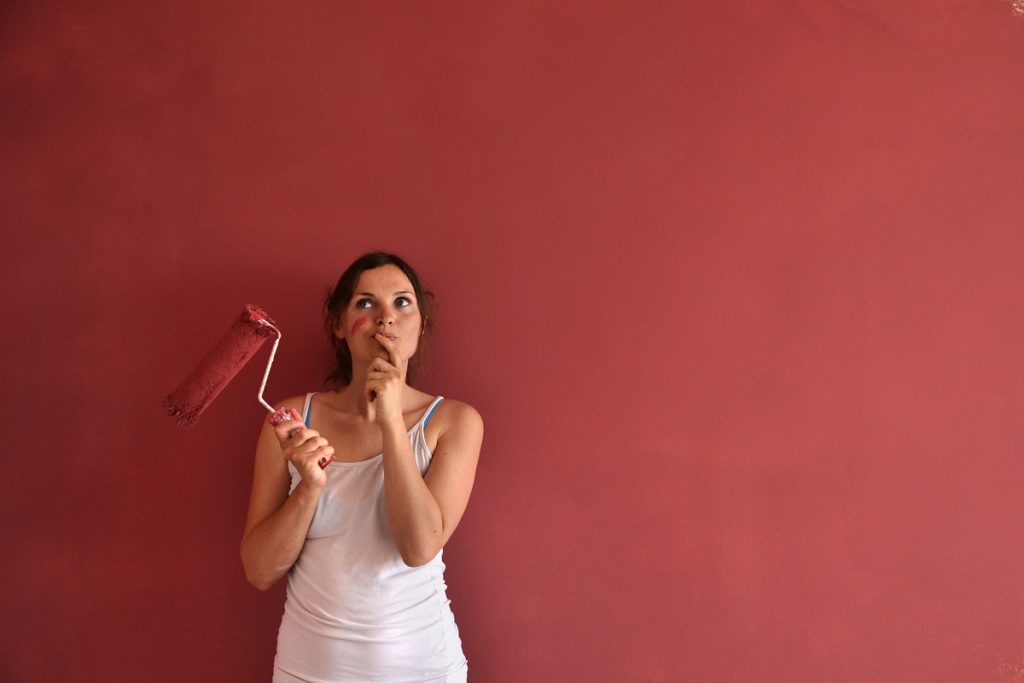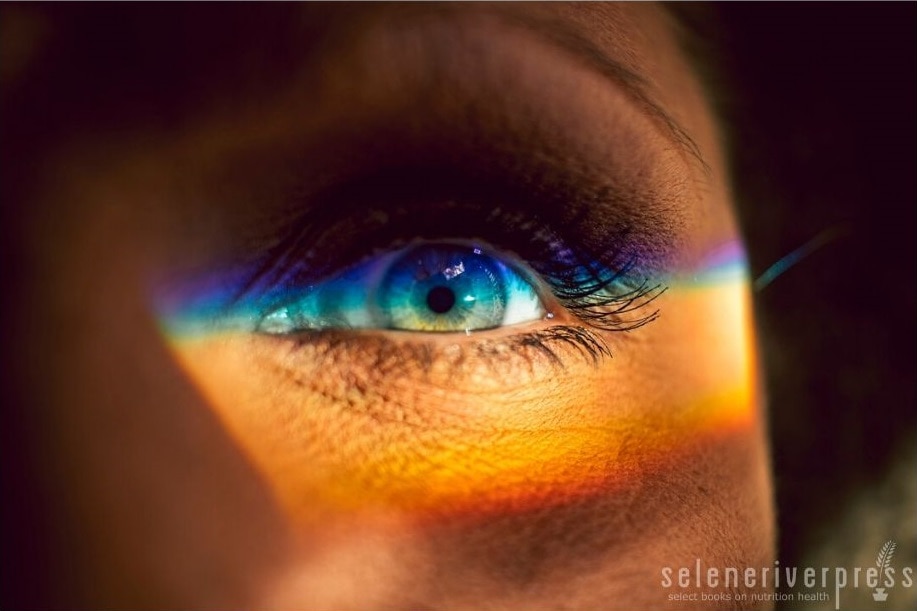One the more interesting things about our humanness is our preference for this color or that color. In some cases this is such an absolute must that we won’t wear a gift if it’s not the right color. For some, buying a car is as big of a deal as buying a home because they are fixated on a certain color.
Allow me to explain my own color story and the reason I decided to look a little deeper into this phenomenon. I was recently cleaning out my bedroom chest of drawers, and I happened to find a nice set of place settings for my dinner table. A gift given to me from a very dear friend some years back. She’d handcrafted them from an expensive material and she’d even embroidered a blessing on the right side and included a little pocket for the silver setting.
I reminisced about the fun times we’d had together as I admired the special gift she’d taken the time to make me. Though I’d never used them, I nevertheless loved them…except for just one little, itty, bitty thing. (Smile) Yes, they were the ugliest sage green I’d ever seen!
Oh well, back in the drawer they went. I suppose that’s where they’ll stay since I don’t have the heart to toss them. (And since she is still among the living, she might find out if I gave them away.) The moral of this story is to be sure you know your gift recipient’s favorite colors so your gift is used. Otherwise, I’d suggest a gift card.
How Do We Form Our Color Preferences?
Writing in Psychology Today, neuroscientist/author R. Douglas Fields, PhD, explains, “Color preferences are deeply rooted emotional responses that seem to lack any rational basis, yet the powerful influence of color rules our choices in everything from the food we eat and the clothes we wear to the cars we buy.”
Fields references studies showing the interesting ways that people are drawn to certain foods and beverages based on color. I have observed this myself in instances of children who will, for example, eat corn on the cob but heaven forbid they eat a side of spinach.
On the topic of color psychology, marketing and psychology expert Nick Kolenda quotes research stating that “color associations may have been formulated early in human history when man associated dark blue with night, and therefore, passivity and bright yellow with sunlight and arousal.”
I strongly suggest that business owners visit Kolenda’s website to learn how consumers are motivated by color psychology. Valuable charts and links will make it worth your while.
Color Therapy: What Is It, and Is It Right for You?
Those interested in the field of color therapy can find numerous websites, books, and courses on the topic. For example, I was fascinated to learn that objects do not possess color! According to the Physics Hypertextbook (bold emphasis mine), “Color is a function of the human visual system, and is not an intrinsic property. Objects don’t have a color; they give off light that appears to be a color. Spectral power distributions exist in the physical world, but color exists only in the mind of the beholder. Our perception of color is not an objective measure of anything about the light that enters our eyes, but it correlates pretty well with objective reality.”
Color therapy has been a part of human experience as far back as ancient Egypt. I learned in my research that colors have special light frequencies that pass through the eyes or skin and penetrate into the human body. These color frequencies may have the ability to produce specific physical and physiological healing or changes. Though there is to date no solid proof that color therapy works, it is used by some of most sophisticated Ayurveda practitioners with great efficacy.
Can color therapy work for you? This article outlines some great information and poses key questions. I quote:
One 2004 review of studies on color use in healthcare settings revealed some interesting problems with the concepts behind color therapy.
-
-
- There’s no direct link between specific colors and health.
- There’s probably a connection between color and mood, but one specific color isn’t directly associated with one specific mood.
- Color changes the way we perceive and behave, but just how it affects us isn’t clear.
- Current thinking on color seems to be an oversimplification of a much more complex type of influence.
-
In some countries, color therapy is recognized as a healing treatment and is regulated by law. In other countries, color therapy is considered a scam and a waste of time and money. As research continues, color therapy may become more controversial or less so. For now, each person must decide whether color therapy is something they want to pursue or not.
My Recommendation from One of the Best
I myself was able to participate in a color therapy session with Dr. Laurel of Corrective Forces. Dr. Laurel is one of the most experienced chiropractors in Colorado. (She also travels to other locations from time to time.) Among numerous other therapies her practice offers, she is trained in Esogetic colorpuncture. Below I quote with permission from Dr. Laurel’s website:
Esogetic colorpuncture is a noninvasive therapeutic and healing modality that uses the application of colored light on the skin over acu-points and reflexive maps of the body. Esogetic colorpuncture is a technique that functions on the premise that the human being in its highest form is light. Life is light in a seemingly static or “frozen” form, and Esogetic colorpuncture uses light and color to transform our being.
Life is dynamic and ever changing; it is alive! Life consists of the combination of light, energy, and information. Thus, living human beings are made up of physical matter, information and the essence of light. Light when frozen becomes matter as we experience it the physical form; therefore, the highest essence of life is light. Esogetic colorpuncture applies visible colors, infrared and ultraviolet light to communicate with the highest essence of the being to restore health, vitality and function. The light waves have the ability to pass through the skin in a noninvasive manor and touch the misinformation in the body that is interfering with the body’s ability to heal itself.
In Closing: The Colors in Your Life Are Important
During the pandemic, a close friend of mine painted every room in her home. She used carefully chosen, subtle but cheery colors, replaced some of her old, worn-out furniture, and replaced the carpet in her bedroom with lightly colored tiles. She also added new pictures, cushions, and even new lighting! My friend said it was one of her most therapeutic endeavors, helping alleviate a good deal of her sadness and depression. She never realized that the old, dull colors she’d been living with for years were affecting her mood so deeply.
Are you ready to change the colors in your life? Or maybe you’d like to call to Dr. Laurel and get some of that deep color therapy in your system. I vote you do both!
[xyz-ihs snippet=”Begin-Authors-Note”]Afterthoughts from the Traditional Cook
Colors
Blue is the color of the dragon-winged girl,
The color of the girl whose life was lost.
Blue is the color of the deity girl,
The color of the one who wouldn’t pay the cost.
Teal is the color of the water-loving girl,
The girl who lead into a new world.
Teal is the color of the frightened-eyed girl,
The girl who into a new life was hurled.
Grey is the color of the logical girl,
The color of the girl who teaches demons how to love.
Grey is the color of the snake-tongued girl,
The color of the boy who thought he was above.
Green is the color of the story-telling girl,
The color of her brother who would fight and **** to own.
Green is the color of the blind and mute child,
The color of those who may have yet to be known.
Orange is the color of the reckless girl,
The color of the girl filled by desire,
Orange is the color of the samurai man,
The color of the man filled with fire.
Red is the color of the five-fold girl,
The color of the demon at the core.
Red is the color of the half-vampire,
The color of the one who wanted more.
Purple is the color of the plaid-skirted girl,
The color of the feral demon child.
Purple is the color of the girl who lived in the sky,
The color of the eyes that watch the wild.
White is the color of the once-afraid man,
The color of the child who never got to have a say.
White is the color of the defender in the skies,
The color of the one who took her own life away.
Black is the color of the white-pawed cat,
The color of the girl who shows one their mind.
Black is the color of the silhouetted man,
The color of the world they left behind.
—“Colors,” Gerudo, June 2013
Disclaimer from Maria Atwood, CNHP: I am a Certified Natural Health Professional, CNHP, not a medical doctor. I do not diagnose, prescribe for, treat, or claim to prevent, mitigate, or cure any human diseases. Please see your medical doctor or health practitioner prior to following any recommendations I make in my blog posts or on my website.
Images from iStock/SchulteProductions (main), PetarPaunchev (woman with paint), archideaphoto (baby room).




